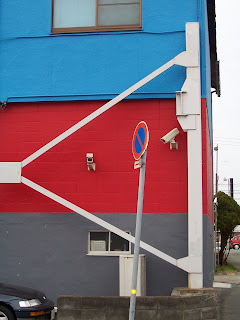


.JPG)


2.JPG)

We've made our way by a series of trains, lots of mime and very helpful railway staff to 'Japan's oldest and 'second most important shrine' (who decides these things ?!) The first is
Ise, Nagoya.
Izumo Taisha is so old no-one actually knows how old it is. * It may have once been as high as 50 metres, according to a document from 950. (Pretty impressive, when it's constructed entirely of wood, with only manpower and rudimentary technology.) The recent discovery of the base of enormous pillars supports the theory. The existing structure is relatively recent (1774).
Naturally Lyn & I made an offering, bowed and clapped the requisite 4 times for the longevity of our marriage (34 years and still going strong, but why take chances?)
The ceremonial rope of woven straw Shimenawa looks big. That's because it's 8m long and weighs one and a half tonnes.. Nevertheless we stood under it and attempted to throw a 100 Y coin into its underside in the hope of it lodging there to provide yet more good fortune. We were unsuccessful and kept the aforementioned coinage, but obviously hundreds before us had had better luck (or possibly reached up when Buddha wasn't watching and forced the spondulicks into the fodder.)
After the faithful Shinto folk have their fortunes divined by the fall of the sticks, they tie these pieces of paper to the nearest convenient pine needle or tree-trunk.
We took fate into our own hands and returned to the art-deco Ichibata Electric Railway Station, then via Rapid Express to Okayama and Nozomi Shinkansen to Himeji, passing this beautiful snow-capped mountain in the Alps. Does anyone know its name?
































.JPG)


2.JPG)












.JPG)





